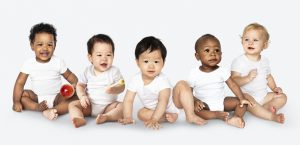
A recent study from Canada’s University of British Columbia (UBC) suggests that eleven-month-old infants can learn to associate the language they hear with ethnicity.
The research, published by Developmental Psychobiology, found that 11-month-old infants looked more at the faces of people of Asian descent compared to those of Caucasian descent when hearing Cantonese but not when hearing Spanish.
“Our findings suggest that by 11 months, infants are making connections between languages and ethnicities based on the individuals they encounter in their environments. In learning about language, infants are doing more than picking up sounds and sentences—they also learn about the speakers of language,” said Lillian May, a psychology lecturer at UBC who was lead author of the study.
The research was done in Vancouver, where approximately nine percent of the population can speak Cantonese.
The researchers played English-learning infants of Caucasian ancestry sentences in both English and Cantonese and showed them pictures of people of Caucasian descent, and of Asian descent. When the infants heard Cantonese, they looked more at the Asian faces than when they were hearing English. When they heard English, they looked equally to Asian and Caucasian faces.
“This indicates that they have already learned that in Vancouver, both Caucasians and Asians are likely to speak English, but only Asians are likely to speak Cantonese,” noted UBC psychology professor Janet Werker, the study’s senior author.
The researchers showed the same pictures to the infants while playing Spanish, to see whether they were inclined to associate any unfamiliar language with any unfamiliar ethnicity. However, in that test the infants looked equally to Asian and Caucasian faces. This suggests young infants pick up on specific language-ethnicity pairings based on the faces and languages they encounter.
“Babies are learning so much about language—even about its social use—long before they produce their first word,” said Werker. “The link between speaker characteristics and language is something no one has to teach babies. They learn it all on their own.” “The ability to link language and ethnicity might help babies with language acquisition. We are now probing this possibility. For example, does a bilingual Chinese-English baby expect Chinese words from a Southeast Asian speaker and English words from a Caucasian speaker? Our preliminary results indicate that indeed, babies are using their expectations about language and ethnicity as another source of information in language learning,” added Werker







